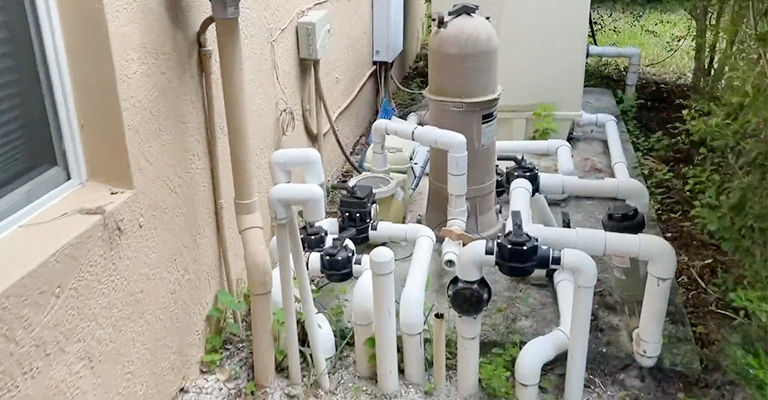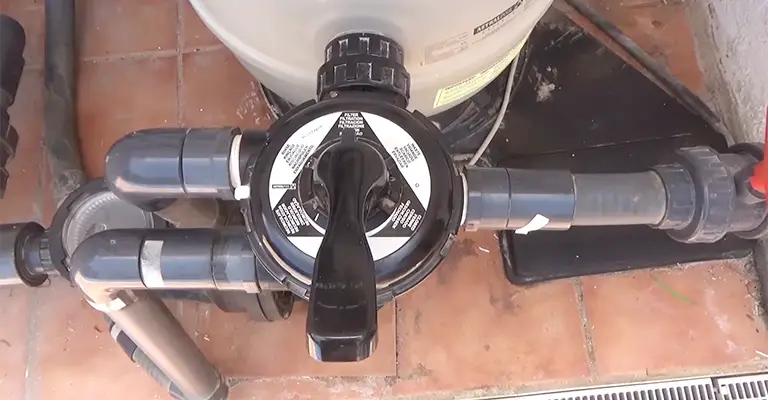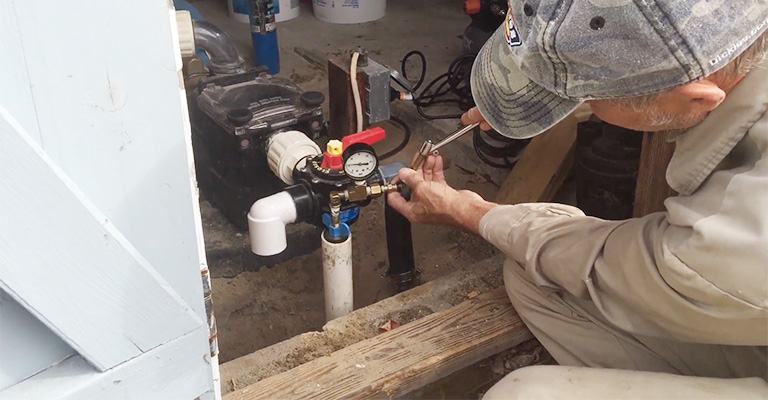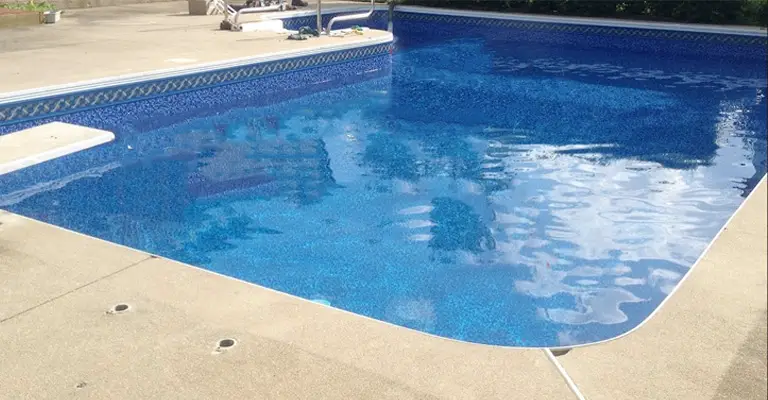Owning a swimming pool is a delightful way to enjoy leisure time and beat the summer heat.
However, if you notice your pool water level dropping consistently while the pump is running, it can be worrying and indicate a potential problem.
Pool water loss when the pump is on is a common issue pool owners face, and it can stem from various causes.
Addressing this problem promptly is essential to prevent further damage and maintain the optimal functioning of your pool.
Whether you have an above-ground or in-ground pool, the fundamental principle remains the same: the pump plays a crucial role in keeping the water clean and circulating it through the filtration system.
When the pump is running, it creates a suction that draws water from the pool and passes it through the filter to remove impurities before returning it to the pool.
Suppose you notice a noticeable decline in water level during this process. In that case, it is essential to investigate and identify the cause to prevent potential damage to the pool equipment and avoid excessive water waste.
Here Are The Reasons Why Your Pool Is Losing Water When Pump Is Running
The water in any swimming pool, whether evaporated or spilt, will eventually disappear. You only need to address the water loss problem as soon as possible, however, if you’re losing water rapidly.
By reading this article, you have probably eliminated all other possibilities and determined that your pool only leaks when the pump is on.
It doesn’t necessarily mean the leak is at your pump, however. This evidence does not suggest a suction-side leak but a pressure-side leak.
1. Pressure-side Return Leaks

Generally, you have a pressure-side return leak if you lose water while your pump is running.
Pumps are under pressure when they run, so the pipes after the pump are also under pressure.
This often results in small leaks and water spraying through your return jets (from the filter to the return jets.) So, what’s the good news?
Air leaks must be eliminated before the pump, and then you should focus on air leaks afterwards. Here’s the bad news: You will need to find the leak. Exactly where should you begin?
2. Check All the Connections
It is important to check hose connections, unions, elbows, and your pump to filter hoses first for leaks. Various causes of water leaks include normal wear and tear, overtightening, and physical damage to unions.
Be sure to check your pump, filter, chlorinator, and heater as well. A leaky pool heater needs to be repaired as soon as possible.
There is the potential that a leaking heater could harm the unit’s internal parts, which may or may not be covered by the manufacturer’s warranty.
Ensure the hoses connecting the pump to the pool filter are in good condition if you have an above-ground pool.
Couplings, unions, or hoses often spring leaks under enormous amounts of pressure. Moreover, hoses can become brittle over time, causing them to leak under pressure.
3. Filter Multiport Valve

Using a multiport valve will allow you to control the water flow in your pool. Therefore, there are many potential pitfalls. Examine the inlet and outlet ports on the valve and the area around the cover.
Leaks from the backwash hose are another common problem. You should check the backwash hose for water running when it shouldn’t.
There may be internal leaks in a multiport valve that has been rendered defective. As a result, you may lose clean water through the waste line or backwash line.
Besides the spider gasket, another culprit is the seat of the valve. A water leak can definitely be caused by damaged or compromised spider gaskets.
4. Return Jet/ Return Jet Fittings
You should also inspect your returns and return jet fittings. A liner leak often occurs around a fitting during the installation of a new liner.
It isn’t supposed to happen, but installers can make mistakes while installing a liner.
In addition, we suggest inspecting the perimeter of your pool for water puddles or wet spots. It might help to identify your leak’s source and location by finding a soft or damp spot in your yard.
5. Pressure Test Your Return Lines

Unfortunately, some leaks are challenging to detect. Performing a pressure test may be necessary if you cannot find any leaks. The best option for those without experience testing return lines is to hire a local pool service company.
Nevertheless, you can test the pressure leaving your filter by connecting a Schrader valve to the pipe, leaving a filter with a couple of winterizing plugs, a small compressor, and some plumbing.
Finding a pressure testing kit at your local hardware and supply store is possible. The return lines must be pressure tested to determine if there is a leak in one of the pipes carrying water back to the pool.
It is unlikely that the test will pinpoint a specific location. This term refers to the length of time between the point at which the pipes go underground at the equipment and where they end at the pool.
What If My Pool Leaks All The Time?
Water may be escaping from a crack in your pool’s shell, plaster, or vinyl, regardless of whether the equipment is running.
Try placing a pH indicator test reagent near the crack while the pump is off if you’re unsure if this is the origin.
A dye leak is found when the dye is sucked into the crack. Underwater lights are also susceptible to this damage, especially in the conduit where the light runs to the junction box.
Alternatively, you may fill the conduit opening in the back of the socket with putty or another caulking agent appropriate to your pool construction.
Additionally, it could be happening within the skimmers. A leak occurs most often when there is a separation between the plastic skimmer and the pool (most commonly in concrete shells).
How Much Does Leak Repair Cost?
Since pool leaks are often hard to find and difficult to assess, service workers may have to visit more than once. It is estimated that the cost of a standard leak repair would range from $150 to $250.
There will clearly be a higher price if there is a severe issue that requires concrete cutting. You should always find problems as soon as possible and resolve them before they get out of hand and cost you some serious money.
The problem should never be ignored! The troubleshooting I’ve covered should help you save time and money since you’ll be able to locate and even fix the problem yourself when you notice your pool is losing water.
When To Call In A Professional
How do you solve the leak problem if you cannot find it? The professionals are there to help you with this, right?
I honestly believe that, in some instances, a professional should be consulted. Leak detection companies can perform a series of tests to figure out where the leak is located and locate the source of the leak so it can be fixed.
The Bottom Line
Your pool structure is probably not to blame if your water level goes down when the pump is on.
Check your pool pump’s piping and components on the pressure side. Sometimes leaks are subtle. Ensure you look for puddles or areas of wetter ground than the surrounding areas.







